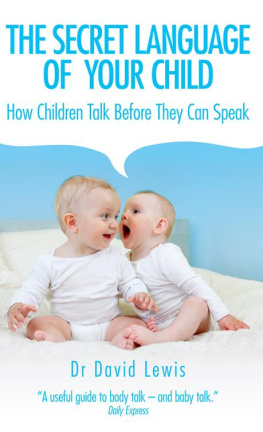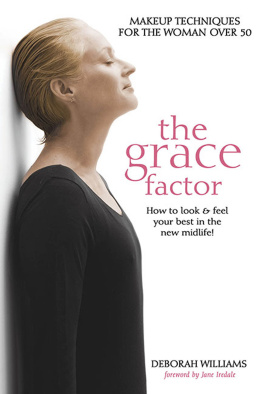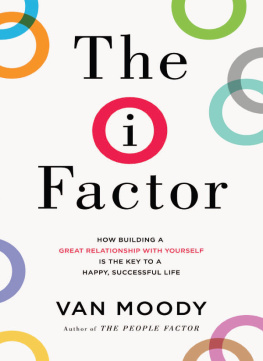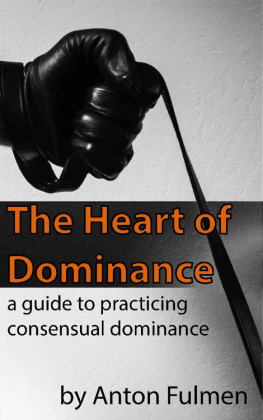Praise for Carla Hannafords books
Smart Moves by Carla Hannaford is a major work of profound importance to our understanding of child development and education. Through a brilliant analysis and synthesis of epochal research by neuroscientist Paul MacLean and the work of Paul Dennison in Educational Kinesiology, she opens a window of understanding into the workings of our mind/body that is not just dramatically pertinent to children, but to adults floundering in todays chaotic world as well.
Rarely have I learned so much in so short and fascinating a time as in reading Smart Moves. Absorbing, formative and of serious value to all of us, it is hard to praise her work sufficiently.
Dr. Joseph Chilton Pearce, author of The Magical Child
It is seldom that we find something so really original and groundbreaking written about education. Smart Moves brings together in a remarkable synthesis knowledge from the neurosciences and information about how bodily movement, emotional expression, nutrition, and the social and physical environment influence learning. I have never seen a better guide to creating more effective learning situations in home and school.
Dr. Willis Harman, President, Institute of Noetic-Sciences
Playing in the Unified Field is a tremendously important book that all humans, from teens to adults would benefit greatly from reading, especially parents of all ages. Carla Hannaford has laid out a delightful set of articulate, authentic, and poetic images. I wish that I could have read this book before I became a parent!
William A. Tiller, Professor Emeritus Stanford University, author of Science and Human Transformation
The Dominance Factor
How Knowing Your Dominant Eye, Ear, Brain, Hand & Foot
Can Improve Your Learning
Carla Hannaford, Ph.D.
SECOND EDITION
REVISED AND ENLARGED
GREAT RIVER BOOKS
SALT LAKE CITY
Book and cover design by M.M. Esterman
Copyright 2011, 1997 by Carla Hannaford
Illustrations Copyright 2011, 1997 by Great River Books
All rights reserved. No part of this book may be used or reproduced in any manner whatsoever
without written permission from the publishers.
For further information contact:
Great River Books
161 M Street
Salt Lake City, Utah 84103
www.greatriverbooks.com
eBook ISBN 978-0-915556-44-1
Library of Congress Cataloging-in-Publication Data
Hannaford, Carla
The dominance factor : how knowing your dominant eye, ear, brain, hand, and foot can improve your learning / Carla Hannaford. 2nd ed.
p. cm.
Includes bibliographical references and index.
ISBN 978-0-915556-40-3 (trade pbk. : alk. paper)
1. Cognitive styles. 2. Cerebral dominance. 3. Left and right (Psychology) 4. Mind and body. I.
Title.
BF311.H3355 2011
153.1 dc21 CIP
Printed in the United States of America
Contents
Illustrations
ACKNOWLEDGEMENTS
Colleen Gardner who first introduced me to a muscle checking way to determine Dominance Profiles.
Dr. Paul and Gail Dennison for for putting together the wonderfully usable Brain Gym and Vision Gym work from many modalities
Cherokee Shaner and Sandra Zachary, special education teachers in Hawaii who assisted me with the first research.
My mother Minnie who loved me in spite of my fully right blocked profile, and my daughter Breeze for her assistance, support, and insights that allowed for expression and usability of this work.
Esta Steenakamp and Rita Edwards, occupational therapists in South Africa who first validated the work within their practice.
Rosemary Sonderegger, Alfred Schatz, and all the other friends and educators worldwide for the encouragement to get my findings and format into print.
Judy Metcalf and Wanda McGee of the Washington, D.C. Area Edu-K Community who worked so many hours to help with the inital draft of the profiles. And to Margarita Hodge who provided encouragement and support to get the layout started.
Mark and Margaret Esterman whose skills and dedication have brought this work to fruition.
Helmut Meyer for his graphic inspiration.
Johanna Bangeman, Karen Kohler and all their fourth grade students who field tested earlier versions of the book in their classrooms.
Introduction
Because of the infinite variation in the way individuals are assembled, it must be assumed that the sentient properties of any one person, like his or her fingerprints could never be identical with those of another. It is probable, therefore, that there does not exist or ever will exist one person exactly like another. If uniqueness were an indispensable requirement for an evolving society, every person would be indispensable.
Paul MacLean, The Triune Brain in Evolution
We all recognize the vast diversity of human beings the diversity that makes each individual unique, interesting, bothersome, a delight, frustrating and a mystery to our own particular nature. Educators and psychologists have developed systems for identifying and generalizing diversity in order to better understand us. Such systems as the Meyers-Briggs Index, Bernice McCarthys 4MAT system, Dunn and Dunns Learning Styles assessment, Enneagrams and Howard Gardners Multiple Intelligences are useful in general typing of human nature and learning styles. An understanding of learning styles is helpful for planning educational and training programs and for greater insight into individual behavior. My research and counseling work has been assisted by using a learning styles assessment system called Dominance Profiles.
This method of gauging and characterizing learning styles was first developed using muscle checking or applied kinesiology. The Dominance Profiles identify the lateral dominance of eyes, ears and hands in relation to the dominant brain hemisphere. These patterns of lateral dominance greatly influence the way that information is internally processed by an individual and consequently the kinds of learning activities he or she prefers.
My Experience with Dominance Profiles
I began using this method for determining dominance profiles in 1986 as a counselor for alienated intermediate school students. Introducing them to this new self-knowledge occasioned a great sigh of relief as they finally understood why they were experiencing difficulty both academically and personally. Their profiles 1) were simply not being accommodated by the current educational curriculum; 2) made it difficult for them to communicate when stressed; and 3) showed their difficulties were neither permanent nor pathological. As we (the students, their teachers and myself) explored their individual profiles, we worked together to create strategies for success.
When I first encountered the Dominance Profiles work, I found it particularly interesting. As a neurophysiologist who was also working with children, I liked the physiological basis of the profiles. This easily assessable, physically derived system allowed me to understand the organization of my students brains, bodies and nervous systems. As both a scientist and a teacher, the linkage of learning styles to the learners mind/body system made sense to me. Dominance Profiles assisted my students and their teachers to see their unique strengths and difficulties more objectively, more flexibly, and with deeper understanding. In my work with many learners and teachers, Dominance Profiles have continued to give me doorways to new and constructive insights into individuals rather than labels which confine and limit their view of themselves and their potential.
Next page









